Individual reading conferences with students are one of the most powerful – yet challenging – practices you can include in your literacy instruction. Spending time one-on-one with students gives us great insight into their successes as readers, as well as information about areas of weakness. And the one-on-one teaching in a reading conference can be incredibly helpful in moving readers forward.
That said, reading conferences are also extremely tricky to carry out. Small group or guided reading instruction can take up a big chunk of your literacy block, leaving you little time for individual reading conferences. Young students may struggle to stay on task while reading independently, limiting your opportunities for individual conferring.
And even when you do find time to confer, facilitating an impactful conversation can be difficult. What questions should you ask? Should students always read aloud to you? How do you manage to keep the conference to just a few minutes in length? This last one is a personal challenge for me!
Being equipped with the right tools can help you overcome these obstacles and design reading conferences that make a difference for your students. Read on to find out how to create your own teacher toolkit to bring to individual reading conferences!
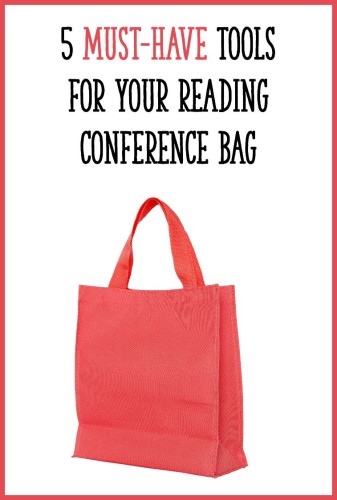
Wait…hold on a second. Before we even start talking about how to make your teacher toolkit, let’s talk about what you should have in place before you make this toolkit or hold your next reading conference. You will need to…
- Set aside time for reading conferences. I like to set aside time for whole-class independent reading, and that’s when I confer with students individually. Even if you are required to see a certain number of guided reading groups each day, leave 10 minutes at the end for individual conferences. OR you can just have students come to your guided reading table but bring their independent reading materials. They can read silently and you can knock out a handful of conferences in 15-20 minutes.
- Make sure students can read/work independently so you can focus on conferring. Before you attempt to confer individually with students, make sure that your other kiddos can read or work independently without your help. If students will be reading independently, focus on building stamina and reading for a few more minutes each day. Stand back and watch students, rather than intervening when a child is off-task or bothering another student. This will require students to problem-solve independently. If your students will be working in centers, try this process for teaching them to work independently.
- Teach students what a reading conference is. Students need to understand what it means to participate in an individual reading conference! I recommend conducting a whole-class minilesson and doing some modeling while the class watches. And before you teach this minilesson, decide how you will structure your conferences. I recommend using an observe-compliment-teach structure that lasts 5 minutes or less. You may not always need students to read aloud to you. Sometimes you might begin the conference with a question that invites students to share their thinking about the text. Explain this structure to students, as well as your expectation that students will apply the strategy that you teach them during the conference.
Once you’ve got all those things in place, you can begin assembling your conferring toolkit. I like to keep my materials in a small, lightweight tote bag so I can easily carry the toolkit to each conference.
In my bag, I always place a folder or binder, and a pen or pencil. This folder or binder holds my conferring records and prompts to get conferences started. Here are some examples of the materials I include in this folder/binder (click on any of the images to download it for free):
This is one type of form that you can use to make notes during your conferences. I like using this particular form because it reminds me of what I need to follow up on next time, to ensure that students are applying what I taught them during the conference. My K-1 Reading Workshop Toolkit has many more options for forms and quick checklists that you can use to keep track of students’ progress!
Effective reading conferences are brief and to-the-point. For this reason, I keep lists of prompts that I can refer to at the beginning of a reading conference. I decide what I want to find out about in regards to the reader’s progress, and I choose one of those questions/prompts to get the conversation started. My K-1 Reading Workshop Toolkit has additional lists of prompts that you can use to find out about a reader’s comprehension of fiction and nonfiction, fluency, and general metacognition.
In addition to the folder or binder, I always have a book or two in my conferring toolkit. When I want to teach a specific strategy to students, I use one of these books and do some modeling or a think-aloud. Since I am not always familiar with the books that students are reading, having my own books on hand is essential for the teaching portion of the minilesson.
I generally use books that I’ve read aloud to students in the past, so that they can focus on features of the text rather than the story. I also choose books that I know well, so that I can quickly turn to a page that has dialogue, or identifies the problem in the story, or reveals a character trait, etc. It’s helpful to bookmark these types of places in books, so that you can turn to them quickly.
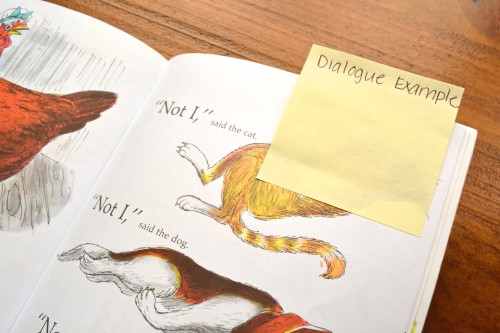
A third must-have for my conferring bag is some kind of concrete tool to remind students to use the strategy I teach during the conference. Here are some possible options:
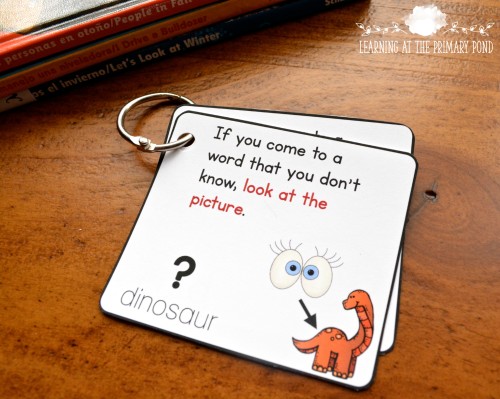
These reading strategy cards are a great tool that students can use as they read independently. Just use a small binder ring and give students only a few strategy cards at a time. The cards featured in this photo also have matching posters in my Reading Workshop Toolkit (93 different strategies are included, so you have lots to choose from!). You can use the posters during whole-class minilessons and then give students matching strategy cards to remind them to use the strategies as they read independently.
If you keep these reading strategy cards in your conferring bag, you can hand them out to students as you teach strategies during your conferences. After the reading conference is over, students keep that card and have a physical reminder to use that strategy. Also, if you laminate the cards, you can then use a dry erase marker to star a particular strategy that you want a child to focus on.
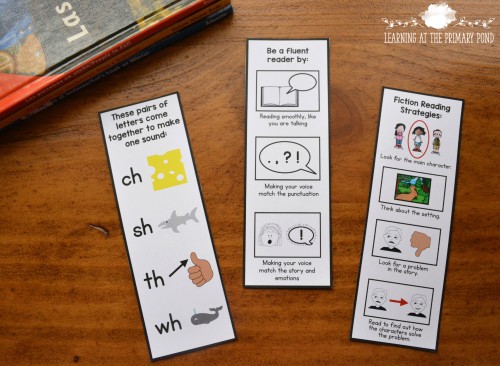
Bookmarks serve as another great reference tool for students. If you teach a child to look for digraphs during a conference, for example, you can then give the child the bookmark featured on the left. Eleven different reference bookmarks are included in color and B&W in my Reading Workshop Toolkit.
A fourth tool for your conferring bag is a timer. As I mentioned previously, keeping my conferences to just a few minutes is a personal struggle for me. It’s important to keep your conferences short and to let students do most of the talking. Using a timer can help you stay on track with this goal.
One last tool to consider including in your conferring bag is a camera. When you spot a child using a strategy well, you can snap a photo of the page of the book and the child. Later on, share that photo with the class and praise the child for using the strategy. Not only does this reinforce the strategy use for that child, but it also gives other students a concrete example of when to apply the strategy.
Making Your Own Conferring Toolkit
Are you ready to make your own conferring toolkit now? Do you have any other suggestions for tools to include? Please comment below! To find out more about the conferring tools I use with my students on a daily basis, click on the photo below.

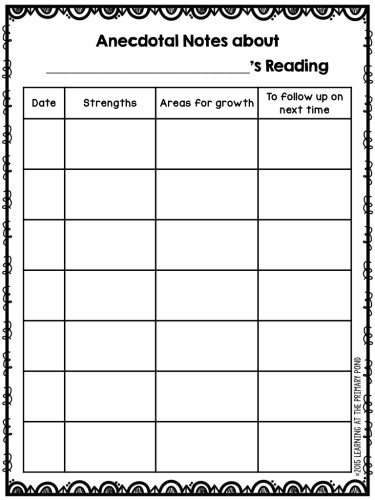

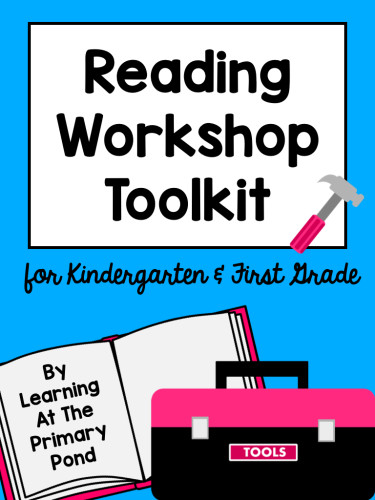
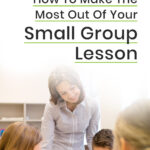

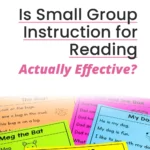
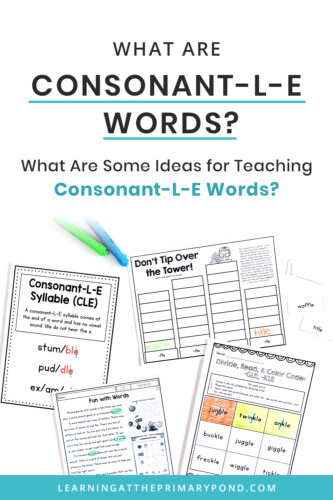
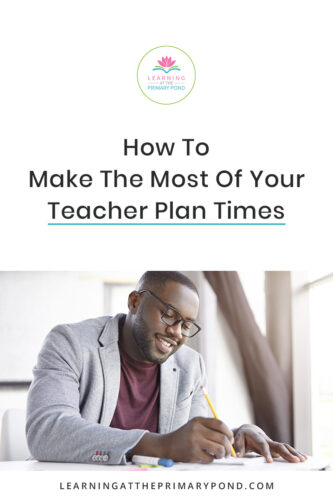







LOVE the post! Very helpful! Have a question though, are your reading strategy cards one that go with CAFE?
Hi Kelcie! So glad you like the post! I am not sure which specific strategies are taught using CAFE, so they are probably not the same. But some of them may overlap, and they all do fit under the categories of Comprehension, Accuracy, etc. I hope that helps!
Alison
Do you have this great tools in Spanish?
Hi Carolina, I’m currently working on creating the reading strategy cards and posters in Spanish. When they are finished, I will post them here: https://www.teacherspayteachers.com/Store/Ms-Lilypad
Thanks for your interest! 🙂
Alison
Hi Alison. Do you have any suggestions for a second grade conferencing bag? I can see how many of these resources would work for my classroom, but do have any other suggestions? Thanks!
Hi Christine! Absolute must-have tools for my conferring bag are the timer, anecdotal note forms, and a couple of books for modeling skills. Beyond that, I’d just pay attention to whatever you feel you end up needing as you start conferences!
Alison
Great tools! I like having the extra books for different strategies
I like the conferring toolkit idea. I’ve been using an old fashion cassette tape player and having students read out load and then listen to themselves on the cassette tape. Some things never go out of style.
That’s awesome!! I love having kids listen to themselves.